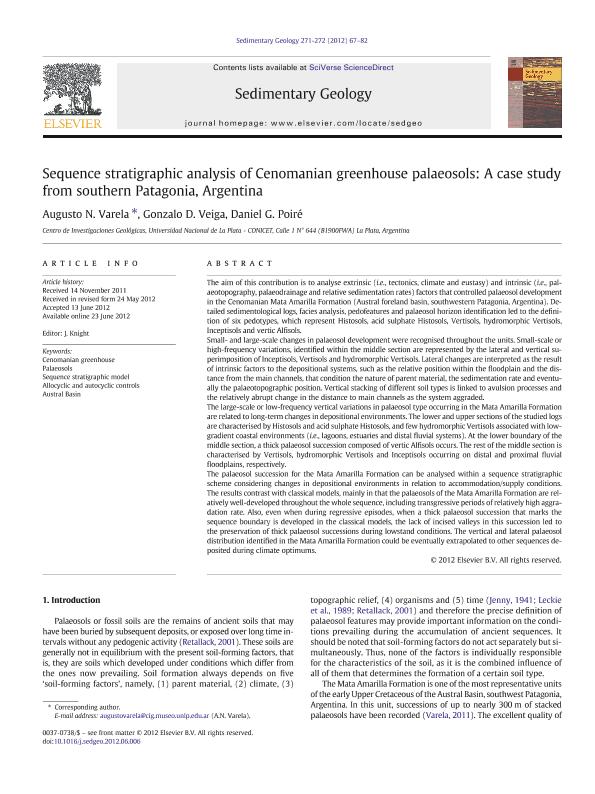Artículo
Sequence stratigraphic analysis of Cenomanian greenhouse palaeosols: a case study from southern Patagonia, Argentina.
Fecha de publicación:
10/2012
Editorial:
Elsevier Science
Revista:
Sedimentary Geology
ISSN:
0037-0738
Idioma:
Inglés
Tipo de recurso:
Artículo publicado
Clasificación temática:
Resumen
The aim of this contribution is to analyse extrinsic (i.e., tectonics, climate and eustasy) and intrinsic (i.e., palaeotopography, palaeodrainage and relative sedimentation rates) factors that controlled palaeosol development in the Cenomanian Mata Amarilla Formation (Austral foreland basin, southwestern Patagonia, Argentina). Detailed sedimentological logs, facies analysis, pedofeatures and palaeosol horizon identification led to the definition of six pedotypes, which represent Histosols, acid sulphate Histosols, Vertisols, hydromorphic Vertisols, Inceptisols and vertic Alfisols.Small- and large-scale changes in palaeosol development were recognised throughout the units. Small-scale or high-frequency variations, identified within the middle section are represented by the lateral and vertical superimposition of Inceptisols, Vertisols and hydromorphic Vertisols. Lateral changes are interpreted as the result of intrinsic factors to the depositional systems, such as the relative position within the floodplain and the distance from the main channels, that condition the nature of parent material, the sedimentation rate and eventually the palaeotopographic position. Vertical stacking of different soil types is linked to avulsion processes and the relatively abrupt change in the distance to main channels as the system aggraded. The large-scale or low-frequency vertical variations in palaeosol type occurring in the Mata Amarilla Formation are related to long-term changes in depositional environments. The lower and upper sections of the studied logs are characterised by Histosols and acid sulphate Histosols, and few hydromorphic Vertisols associated with low-gradient coastal environments (i.e., lagoons, estuaries and distal fluvial systems). At the lower boundary of the middle section, a thick palaeosol succession composed of vertic Alfisols occurs. The rest of the middle section is characterised by Vertisols, hydromorphic Vertisols and Inceptisols occurring on distal and proximal fluvial floodplains, respectively. The palaeosol succession for the Mata Amarilla Formation can be analysed within a sequence stratigraphic scheme considering changes in depositional environments in relation to accommodation/supply conditions. The results contrast with classical models, mainly in that the palaeosols of the Mata Amarilla Formation are relatively well-developed throughout the whole sequence, including transgressive periods of relatively high aggradation rate. Also, even when during regressive episodes, when a thick palaeosol succession that marks the sequence boundary is developed in the classical models, the lack of incised valleys in this succession led to the preservation of thick palaeosol successions during lowstand conditions. The vertical and lateral palaeosol distribution identified in the Mata Amarilla Formation could be eventually extrapolated to other sequences deposited during climate optimums. © 2012 Elsevier B.V.
Archivos asociados
Licencia
Identificadores
Colecciones
Articulos(CIG)
Articulos de CENTRO DE INVEST.GEOLOGICAS (I)
Articulos de CENTRO DE INVEST.GEOLOGICAS (I)
Citación
Varela, Augusto Nicolás; Veiga, Gonzalo Diego; Poire, Daniel Gustavo; Sequence stratigraphic analysis of Cenomanian greenhouse palaeosols: a case study from southern Patagonia, Argentina.; Elsevier Science; Sedimentary Geology; 271-272; 10-2012; 67-82
Compartir
Altmétricas




